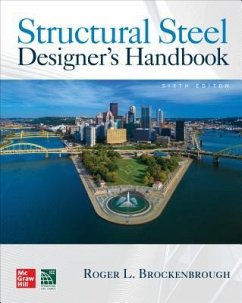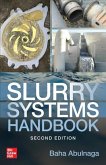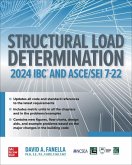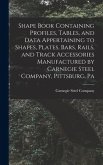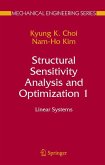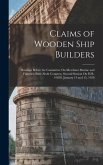- Gebundenes Buch
- Merkliste
- Auf die Merkliste
- Bewerten Bewerten
- Teilen
- Produkt teilen
- Produkterinnerung
- Produkterinnerung
Publisher's Note: Products purchased from Third Party sellers are not guaranteed by the publisher for quality, authenticity, or access to any online entitlements included with the product. A single source for structural steel design information-fully updated for current technologies and standards Thoroughly revised for the most recent design codes, standards, and specifications, Structural Steel Designer's Handbook, Sixth Edition provides apractical, easy-to-use source for the latest information essential to the design of steel structures. You will get design examples throughout the book that…mehr
Andere Kunden interessierten sich auch für
![Manufacturing Engineering Handbook, Second Edition Manufacturing Engineering Handbook, Second Edition]() Hwaiyu GengManufacturing Engineering Handbook, Second Edition205,99 €
Hwaiyu GengManufacturing Engineering Handbook, Second Edition205,99 €![Slurry Systems Handbook, Second Edition Slurry Systems Handbook, Second Edition]() Baha AbulnagaSlurry Systems Handbook, Second Edition203,99 €
Baha AbulnagaSlurry Systems Handbook, Second Edition203,99 €![Structural Load Determination: 2024 IBC and Asce/SEI 7-22 Structural Load Determination: 2024 IBC and Asce/SEI 7-22]() David A FanellaStructural Load Determination: 2024 IBC and Asce/SEI 7-2293,99 €
David A FanellaStructural Load Determination: 2024 IBC and Asce/SEI 7-2293,99 €![Shape Book Containing Profiles, Tables, and Data Appertaining to Shapes, Plates, Bars, Rails, and Track Accessories Manufactured by Carnegie Steel Com Shape Book Containing Profiles, Tables, and Data Appertaining to Shapes, Plates, Bars, Rails, and Track Accessories Manufactured by Carnegie Steel Com]() Shape Book Containing Profiles, Tables, and Data Appertaining to Shapes, Plates, Bars, Rails, and Track Accessories Manufactured by Carnegie Steel Com37,99 €
Shape Book Containing Profiles, Tables, and Data Appertaining to Shapes, Plates, Bars, Rails, and Track Accessories Manufactured by Carnegie Steel Com37,99 €![Structural Health Monitoring Using Emerging Signal Processing Approaches with Artificial Intelligence Algorithms Structural Health Monitoring Using Emerging Signal Processing Approaches with Artificial Intelligence Algorithms]() Chunwei ZhangStructural Health Monitoring Using Emerging Signal Processing Approaches with Artificial Intelligence Algorithms223,99 €
Chunwei ZhangStructural Health Monitoring Using Emerging Signal Processing Approaches with Artificial Intelligence Algorithms223,99 €![Structural Sensitivity Analysis and Optimization 1 Structural Sensitivity Analysis and Optimization 1]() Kyung K. ChoiStructural Sensitivity Analysis and Optimization 1162,99 €
Kyung K. ChoiStructural Sensitivity Analysis and Optimization 1162,99 €![Claims of Wooden Ship Builders: Hearings Before the Committee On Merchant Marine and Fisheries, Sixty-Sixth Congress, Second Session On H.R. 10838. Ja Claims of Wooden Ship Builders: Hearings Before the Committee On Merchant Marine and Fisheries, Sixty-Sixth Congress, Second Session On H.R. 10838. Ja]() AnonymousClaims of Wooden Ship Builders: Hearings Before the Committee On Merchant Marine and Fisheries, Sixty-Sixth Congress, Second Session On H.R. 10838. Ja34,99 €
AnonymousClaims of Wooden Ship Builders: Hearings Before the Committee On Merchant Marine and Fisheries, Sixty-Sixth Congress, Second Session On H.R. 10838. Ja34,99 €-
-
-
Publisher's Note: Products purchased from Third Party sellers are not guaranteed by the publisher for quality, authenticity, or access to any online entitlements included with the product. A single source for structural steel design information-fully updated for current technologies and standards Thoroughly revised for the most recent design codes, standards, and specifications, Structural Steel Designer's Handbook, Sixth Edition provides apractical, easy-to-use source for the latest information essential to the design of steel structures. You will get design examples throughout the book that show how complex code provisions work in conjunction with one another in real-world building and bridge projects. After a brief introduction to the fundamental properties of structural steel fabrication and erection, the book goes on to cover steel design methods for beams, columns, tension components, roof systems, and connections. Updated to reflect the latest code changes, it explains the steel design provisions found in AISC 360-16, the AASHTO Standard Specification for Structural Steel Bridges, the AISI Cold-Formed Steel Standards, ASCE 7-16, and the 2018 IBC. .Covers the steel design provisions found in the 2018 IBC, ASCE 7-16, AISC 360-16, AASHTO, and AISI standards .Includes contributions from leading experts on steel .Written by an experienced engineering consultant and technical writer
Hinweis: Dieser Artikel kann nur an eine deutsche Lieferadresse ausgeliefert werden.
Hinweis: Dieser Artikel kann nur an eine deutsche Lieferadresse ausgeliefert werden.
Produktdetails
- Produktdetails
- Verlag: McGraw Hill LLC
- 6th edition
- Seitenzahl: 816
- Erscheinungstermin: 14. Oktober 2019
- Englisch
- Abmessung: 244mm x 192mm x 45mm
- Gewicht: 1393g
- ISBN-13: 9781260440799
- ISBN-10: 1260440796
- Artikelnr.: 56025810
- Herstellerkennzeichnung
- Libri GmbH
- Europaallee 1
- 36244 Bad Hersfeld
- 06621 890
- Verlag: McGraw Hill LLC
- 6th edition
- Seitenzahl: 816
- Erscheinungstermin: 14. Oktober 2019
- Englisch
- Abmessung: 244mm x 192mm x 45mm
- Gewicht: 1393g
- ISBN-13: 9781260440799
- ISBN-10: 1260440796
- Artikelnr.: 56025810
- Herstellerkennzeichnung
- Libri GmbH
- Europaallee 1
- 36244 Bad Hersfeld
- 06621 890
Roger L. Brockenbrough (Pittsburgh, PA), is Senior Research Consultant for US Steel Group, USX, and maintains his own consulting business dealing with PC CAD. He is a contributor to Standard Handbook for Civil Engineers and editor of Highway Engineering Handbook.
Contributors
Preface to the Sixth Edition
Preface to the Second Edition
Factors for Conversion to SI Units of Measurement
Chapter 1. Properties of Structural Steels and Effects of Steelmaking and
Fabrication
1.1 Structural Steel Shapes and Plates
1.2 Steel-Quality Designations
1.3 Steel Sheet and Strip for Structural Applications
1.4 Tubing for Structural Applications
1.5 Steel Cable for Structural Applications
1.6 Tensile Properties
1.7 Properties in Shear
1.8 Hardness Tests
1.9 Effect of Cold Work on Tensile Properties
1.10 Effect of Strain Rate on Tensile Properties
1.11 Effect of Elevated Temperatures on Tensile Properties
1.12 Fatigue
1.13 Brittle Fracture
1.14 Residual Stresses
1.15 Lamellar Tearing
1.16 Welded Splices in Heavy Sections
1.17 k-Area Cracking
1.18 Variations in Mechanical Properties
1.19 Changes in Carbon Steels on Heating and Cooling
1.20 Effects of Grain Size
1.21 Annealing and Normalizing
1.22 Effects of Chemistry on Steel Properties
1.23 Steelmaking Methods
1.24 Casting and Hot Rolling
1.25 Effects of Punching Holes and Shearing
1.26 Effects of Welding
1.27 Effects of Thermal Cutting
Chapter 2. Fabrication and Erection
2.1 Estimates, Material Orders, and Shop Drawings
2.2 Requirements for Drawings
2.3 Fabrication Practices and Processes: Material Preparation
2.4 Fabrication Practices and Processes: Assembly, Fitting, and Fastening
2.5 Shop Assembly
2.6 Rolled Sections
2.7 Built-Up Sections
2.8 Cleaning and Painting and Architecturally Exposed Structural Steel
2.9 Fabrication Tolerances
2.10 Steel Frame Erection
2.11 Erection Equipment
2.12 Erection Methods for Buildings
2.13 Erection Procedure for Bridges
2.14 Field Tolerances
2.15 Coordination and Constructability
2.16 Safety Concerns
2.17 Quality Control and Quality Assurance
Chapter 3. Connections
3.1 General Considerations for Connection Design
3.2 Design of Fasteners and Welds
3.3 General Connection Design Procedure
3.4 Shear and Axial Beam End Connections
3.5 Axial Connections
3.6 Moment Connections
3.7 Vertical Brace Design by Uniform Force Method
3.8 References
Chapter 4. Building Codes, Loads, and Fire Protection
4.1 Building Codes
4.2 Approval of Special Construction
4.3 Standard Specifications
4.4 Building Occupancy Loads
4.5 Roof Loads
4.6 Wind Loads
4.7 Seismic Loads
4.8 Tsunami Loads
4.9 Impact Loads
4.10 Crane-Runway Loads
4.11 Self-Straining Load Effects
4.12 Combined Loads
4.13 Fire Protection
Chapter 5. Criteria for Building Design
5.1 Materials, Design Methods, and Other Considerations
5.2 Design for Stability
5.3 Design of Tension Members
5.4 Design of Compression Members
5.5 Design of Flexural Members
5.6 Design of Members for Shear
5.7 Design for Combined Forces and Torsion
5.8 Design of Composite Members
5.9 Design of Connections
Chapter 6. Design of Building Members
6.1 Tension Members
6.2 Example-LRFD for Double-Angle Hanger
6.3 Example-LRFD for Wide-Flange Truss Members
6.4 Compression Members
6.5 Example-LRFD for Steel Pipe in Axial Compression
6.6 Example-LRFD for Wide-Flange Section with Axial Compression
6.7 Example-LRFD for Double Angles with Axial Compression
6.8 Steel Beams
6.9 Example-LRFD for Simple-Span Floor Beam
6.10 Example-LRFD for Floor Beam with Unbraced Top Flange
6.11 Example-LRFD for Floor Beam with Overhang
6.12 Composite Beams
6.13 LRFD for Composite Beam with Uniform Loads
6.14 Example-LRFD for Composite Beam with Concentrated Loads and End
Moments
6.15 Example-LRFD for Wide-Flange Column in a Multistory Rigid Frame
Chapter 7. Floor and Roof Systems
FLOOR DECKS
7.1 Concrete Fill on Metal Deck
7.2 Precast Concrete Plank
ROOF DECKS
7.3 Metal Roof Deck
7.4 Lightweight Precast Concrete Roof Panels
FLOOR FRAMING
7.5 Rolled Shapes
7.6 Open-Web Joists
7.7 Cold-Formed Steel Framing
7.8 Floor Trusses
7.9 Staggered Trusses
7.10 Cellular and Castellated Beams
7.11 Vibrations
7.12 Dead-Load Deflection
7.13 Fire Protection
ROOF FRAMING
7.14 Plate Girders
7.15 Roof Trusses
7.16 Space Frames
7.17 Arched Roofs
7.18 Dome Roofs
7.19 Cable Structures
7.20 Tensegrity Domes
Chapter 8. Lateral-Force Design
8.1 Description of Wind Forces
8.2 Determination of Wind Loads
8.3 Seismic Loads in Model Codes
8.4 Seismic Design Loads
8.5 Dynamic Method of Seismic Load Distribution
8.6 Alternate Seismic Design Methods
8.7 Structural Steel Systems for Seismic Design
8.8 Seismic-Design Limitations on Steel Frames
8.9 Forces in Frames Subjected to Lateral Loads
8.10 Member and Connection Design for Lateral Loads
8.11 Designing for Tsunami Loads
Chapter 9. Cold-Formed Steel Design
9.1 Design Specifications and Materials
9.2 Manufacturing Methods and Effects
9.3 Nominal Loads
9.4 Design Methods
9.5 Section Property Calculations
9.6 Effective Width Concept
9.7 Maximum Width-to-Thickness Ratios Using Effective Width Method
9.8 Effective Widths of Stiffened Elements
9.9 Effective Widths of Unstiffened Elements
9.10 Effective Widths of Uniformly Compressed Elements with Simple Lip Edge
Stiffener
9.11 Tension Members
9.12 Flexural Members
9.13 Concentrically Loaded Compression Members
9.14 Combined Tensile Axial Load and Bending
9.15 Combined Compressive Axial Load and Bending
9.16 Cylindrical Tubular Members
9.17 Welded Connections
9.18 Bolted Connections
9.19 Screw Connections
9.20 Rupture (Fracture in Net Section)
9.21 Cold-Formed Steel Framing Design Resources
9.22 Example of Effective Section Calculation
9.23 Example of Bending Strength Calculation
Chapter 10. Highway Bridge Design Criteria
10.1 Specifications
10.2 General Design Considerations
10.3 Design Methods
10.4 Highway Design Loadings
10.5 Distribution of Loads Through Decks
10.6 Fracture Control
10.7 Repetitive Loading and Fatigue
10.8 Detailing for Earthquakes
10.9 Detailing for Buckling
10.10 Criteria for Built-Up Tension Members
10.11 Criteria for Built-Up Compression Members
10.12 Plate Girders and Rolled Beams
10.13 Composite Construction with I-Girders
10.14 Cost-Effective Plate-Girder Designs
10.15 Box Girders
10.16 Hybrid Girders
10.17 Orthotropic-Deck Bridges
10.18 Bearings
10.19 Detailing for Weldability
10.20 Bridge Decks
10.21 Elimination of Expansion Joints in Highway Bridges
10.22 Bridge Steels and Corrosion Protection
Chapter 11. Beam and Girder Bridges
11.1 Characteristics of Beam Bridges
11.2 Characteristics of Plate-Girder Stringer Bridges
11.3 Example-Load Factor Design of Composite Plate-Girder Bridge
11.4 Characteristics of Curved-Girder Bridges
11.5 Deck Plate-Girder Bridges with Floor Beams
11.6 Through Plate-Girder Bridges with Floor Beams
11.7 Composite Box-Girder Bridges
11.8 Continuous-Beam Bridges
11.9 Example-Load and Resistance Factor Design (LRFD) of Composite
Plate-Girder Bridge
Chapter 12. Truss Bridges
12.1 Specifications
12.2 Truss Components
12.3 Types of Trusses
12.4 Bridge Layout
12.5 Deck Design
12.6 Lateral Bracing, Portals, and Sway Frames
12.7 Resistance to Longitudinal Forces
12.8 Truss Design Procedure
12.9 Truss Member Details
12.10 Member and Joint Design Examples-LFD and SLD
12.11 Member Design Example-LRFD
12.12 Truss Joint Design Procedure
12.13 Truss Joint Design and Rating
12.14 Example-Load and Resistance Factor Rating of a Truss Joint
12.15 Skewed Bridges
12.16 Truss Bridges on Curves
12.17 Truss Supports and Other Details
12.18 Continuous Trusses
12.19 References
Chapter 13. Arch Bridges
13.1 Types of Arches
13.2 Arch Forms
13.3 Selection of Arch Type and Form
13.4 Comparison of Arch with Other Bridge Types
13.5 Erection of Arch Bridges
13.6 Design of Arch Ribs and Ties
13.7 Design of Other Elements
13.8 Examples of Arch Bridges
13.9 Guidelines for Preliminary Designs and Estimates
13.10 Buckling Considerations for Arches
13.11 Example-Design of Tied-Arch Bridge
Chapter 14. Cable-Suspended Bridges
14.1 Evolution of Cable-Suspended Bridges
14.2 Classification of Cable-Suspended Bridges
14.3 Classification and Characteristics of Suspension Bridges
14.4 Classification and Characteristics of Cable-Stayed Bridges
14.5 Classification of Bridges by Span
14.6 Cable-Suspended Bridges for Rail Loading
14.7 Specifications and Loadings for Cable-Suspended Bridges
14.8 Cables
14.9 Cable Saddles, Anchorages, and Connections
14.10 Corrosion Protection of Cables
14.11 Statics of Cables
14.12 Suspension Bridge Analysis
14.13 Preliminary Suspension Bridge Design
14.14 Self-Anchored Suspension Bridges
14.15 Cable-Stayed Bridge Analysis
14.16 Preliminary Design of Cable-Stayed Bridges
14.17 Aerodynamic Analysis of Cable-Suspended Bridges
14.18 Seismic Analysis of Cable-Suspended Structures
14.19 Erection of Cable-Suspended Bridges
Index
Preface to the Sixth Edition
Preface to the Second Edition
Factors for Conversion to SI Units of Measurement
Chapter 1. Properties of Structural Steels and Effects of Steelmaking and
Fabrication
1.1 Structural Steel Shapes and Plates
1.2 Steel-Quality Designations
1.3 Steel Sheet and Strip for Structural Applications
1.4 Tubing for Structural Applications
1.5 Steel Cable for Structural Applications
1.6 Tensile Properties
1.7 Properties in Shear
1.8 Hardness Tests
1.9 Effect of Cold Work on Tensile Properties
1.10 Effect of Strain Rate on Tensile Properties
1.11 Effect of Elevated Temperatures on Tensile Properties
1.12 Fatigue
1.13 Brittle Fracture
1.14 Residual Stresses
1.15 Lamellar Tearing
1.16 Welded Splices in Heavy Sections
1.17 k-Area Cracking
1.18 Variations in Mechanical Properties
1.19 Changes in Carbon Steels on Heating and Cooling
1.20 Effects of Grain Size
1.21 Annealing and Normalizing
1.22 Effects of Chemistry on Steel Properties
1.23 Steelmaking Methods
1.24 Casting and Hot Rolling
1.25 Effects of Punching Holes and Shearing
1.26 Effects of Welding
1.27 Effects of Thermal Cutting
Chapter 2. Fabrication and Erection
2.1 Estimates, Material Orders, and Shop Drawings
2.2 Requirements for Drawings
2.3 Fabrication Practices and Processes: Material Preparation
2.4 Fabrication Practices and Processes: Assembly, Fitting, and Fastening
2.5 Shop Assembly
2.6 Rolled Sections
2.7 Built-Up Sections
2.8 Cleaning and Painting and Architecturally Exposed Structural Steel
2.9 Fabrication Tolerances
2.10 Steel Frame Erection
2.11 Erection Equipment
2.12 Erection Methods for Buildings
2.13 Erection Procedure for Bridges
2.14 Field Tolerances
2.15 Coordination and Constructability
2.16 Safety Concerns
2.17 Quality Control and Quality Assurance
Chapter 3. Connections
3.1 General Considerations for Connection Design
3.2 Design of Fasteners and Welds
3.3 General Connection Design Procedure
3.4 Shear and Axial Beam End Connections
3.5 Axial Connections
3.6 Moment Connections
3.7 Vertical Brace Design by Uniform Force Method
3.8 References
Chapter 4. Building Codes, Loads, and Fire Protection
4.1 Building Codes
4.2 Approval of Special Construction
4.3 Standard Specifications
4.4 Building Occupancy Loads
4.5 Roof Loads
4.6 Wind Loads
4.7 Seismic Loads
4.8 Tsunami Loads
4.9 Impact Loads
4.10 Crane-Runway Loads
4.11 Self-Straining Load Effects
4.12 Combined Loads
4.13 Fire Protection
Chapter 5. Criteria for Building Design
5.1 Materials, Design Methods, and Other Considerations
5.2 Design for Stability
5.3 Design of Tension Members
5.4 Design of Compression Members
5.5 Design of Flexural Members
5.6 Design of Members for Shear
5.7 Design for Combined Forces and Torsion
5.8 Design of Composite Members
5.9 Design of Connections
Chapter 6. Design of Building Members
6.1 Tension Members
6.2 Example-LRFD for Double-Angle Hanger
6.3 Example-LRFD for Wide-Flange Truss Members
6.4 Compression Members
6.5 Example-LRFD for Steel Pipe in Axial Compression
6.6 Example-LRFD for Wide-Flange Section with Axial Compression
6.7 Example-LRFD for Double Angles with Axial Compression
6.8 Steel Beams
6.9 Example-LRFD for Simple-Span Floor Beam
6.10 Example-LRFD for Floor Beam with Unbraced Top Flange
6.11 Example-LRFD for Floor Beam with Overhang
6.12 Composite Beams
6.13 LRFD for Composite Beam with Uniform Loads
6.14 Example-LRFD for Composite Beam with Concentrated Loads and End
Moments
6.15 Example-LRFD for Wide-Flange Column in a Multistory Rigid Frame
Chapter 7. Floor and Roof Systems
FLOOR DECKS
7.1 Concrete Fill on Metal Deck
7.2 Precast Concrete Plank
ROOF DECKS
7.3 Metal Roof Deck
7.4 Lightweight Precast Concrete Roof Panels
FLOOR FRAMING
7.5 Rolled Shapes
7.6 Open-Web Joists
7.7 Cold-Formed Steel Framing
7.8 Floor Trusses
7.9 Staggered Trusses
7.10 Cellular and Castellated Beams
7.11 Vibrations
7.12 Dead-Load Deflection
7.13 Fire Protection
ROOF FRAMING
7.14 Plate Girders
7.15 Roof Trusses
7.16 Space Frames
7.17 Arched Roofs
7.18 Dome Roofs
7.19 Cable Structures
7.20 Tensegrity Domes
Chapter 8. Lateral-Force Design
8.1 Description of Wind Forces
8.2 Determination of Wind Loads
8.3 Seismic Loads in Model Codes
8.4 Seismic Design Loads
8.5 Dynamic Method of Seismic Load Distribution
8.6 Alternate Seismic Design Methods
8.7 Structural Steel Systems for Seismic Design
8.8 Seismic-Design Limitations on Steel Frames
8.9 Forces in Frames Subjected to Lateral Loads
8.10 Member and Connection Design for Lateral Loads
8.11 Designing for Tsunami Loads
Chapter 9. Cold-Formed Steel Design
9.1 Design Specifications and Materials
9.2 Manufacturing Methods and Effects
9.3 Nominal Loads
9.4 Design Methods
9.5 Section Property Calculations
9.6 Effective Width Concept
9.7 Maximum Width-to-Thickness Ratios Using Effective Width Method
9.8 Effective Widths of Stiffened Elements
9.9 Effective Widths of Unstiffened Elements
9.10 Effective Widths of Uniformly Compressed Elements with Simple Lip Edge
Stiffener
9.11 Tension Members
9.12 Flexural Members
9.13 Concentrically Loaded Compression Members
9.14 Combined Tensile Axial Load and Bending
9.15 Combined Compressive Axial Load and Bending
9.16 Cylindrical Tubular Members
9.17 Welded Connections
9.18 Bolted Connections
9.19 Screw Connections
9.20 Rupture (Fracture in Net Section)
9.21 Cold-Formed Steel Framing Design Resources
9.22 Example of Effective Section Calculation
9.23 Example of Bending Strength Calculation
Chapter 10. Highway Bridge Design Criteria
10.1 Specifications
10.2 General Design Considerations
10.3 Design Methods
10.4 Highway Design Loadings
10.5 Distribution of Loads Through Decks
10.6 Fracture Control
10.7 Repetitive Loading and Fatigue
10.8 Detailing for Earthquakes
10.9 Detailing for Buckling
10.10 Criteria for Built-Up Tension Members
10.11 Criteria for Built-Up Compression Members
10.12 Plate Girders and Rolled Beams
10.13 Composite Construction with I-Girders
10.14 Cost-Effective Plate-Girder Designs
10.15 Box Girders
10.16 Hybrid Girders
10.17 Orthotropic-Deck Bridges
10.18 Bearings
10.19 Detailing for Weldability
10.20 Bridge Decks
10.21 Elimination of Expansion Joints in Highway Bridges
10.22 Bridge Steels and Corrosion Protection
Chapter 11. Beam and Girder Bridges
11.1 Characteristics of Beam Bridges
11.2 Characteristics of Plate-Girder Stringer Bridges
11.3 Example-Load Factor Design of Composite Plate-Girder Bridge
11.4 Characteristics of Curved-Girder Bridges
11.5 Deck Plate-Girder Bridges with Floor Beams
11.6 Through Plate-Girder Bridges with Floor Beams
11.7 Composite Box-Girder Bridges
11.8 Continuous-Beam Bridges
11.9 Example-Load and Resistance Factor Design (LRFD) of Composite
Plate-Girder Bridge
Chapter 12. Truss Bridges
12.1 Specifications
12.2 Truss Components
12.3 Types of Trusses
12.4 Bridge Layout
12.5 Deck Design
12.6 Lateral Bracing, Portals, and Sway Frames
12.7 Resistance to Longitudinal Forces
12.8 Truss Design Procedure
12.9 Truss Member Details
12.10 Member and Joint Design Examples-LFD and SLD
12.11 Member Design Example-LRFD
12.12 Truss Joint Design Procedure
12.13 Truss Joint Design and Rating
12.14 Example-Load and Resistance Factor Rating of a Truss Joint
12.15 Skewed Bridges
12.16 Truss Bridges on Curves
12.17 Truss Supports and Other Details
12.18 Continuous Trusses
12.19 References
Chapter 13. Arch Bridges
13.1 Types of Arches
13.2 Arch Forms
13.3 Selection of Arch Type and Form
13.4 Comparison of Arch with Other Bridge Types
13.5 Erection of Arch Bridges
13.6 Design of Arch Ribs and Ties
13.7 Design of Other Elements
13.8 Examples of Arch Bridges
13.9 Guidelines for Preliminary Designs and Estimates
13.10 Buckling Considerations for Arches
13.11 Example-Design of Tied-Arch Bridge
Chapter 14. Cable-Suspended Bridges
14.1 Evolution of Cable-Suspended Bridges
14.2 Classification of Cable-Suspended Bridges
14.3 Classification and Characteristics of Suspension Bridges
14.4 Classification and Characteristics of Cable-Stayed Bridges
14.5 Classification of Bridges by Span
14.6 Cable-Suspended Bridges for Rail Loading
14.7 Specifications and Loadings for Cable-Suspended Bridges
14.8 Cables
14.9 Cable Saddles, Anchorages, and Connections
14.10 Corrosion Protection of Cables
14.11 Statics of Cables
14.12 Suspension Bridge Analysis
14.13 Preliminary Suspension Bridge Design
14.14 Self-Anchored Suspension Bridges
14.15 Cable-Stayed Bridge Analysis
14.16 Preliminary Design of Cable-Stayed Bridges
14.17 Aerodynamic Analysis of Cable-Suspended Bridges
14.18 Seismic Analysis of Cable-Suspended Structures
14.19 Erection of Cable-Suspended Bridges
Index
Contributors
Preface to the Sixth Edition
Preface to the Second Edition
Factors for Conversion to SI Units of Measurement
Chapter 1. Properties of Structural Steels and Effects of Steelmaking and
Fabrication
1.1 Structural Steel Shapes and Plates
1.2 Steel-Quality Designations
1.3 Steel Sheet and Strip for Structural Applications
1.4 Tubing for Structural Applications
1.5 Steel Cable for Structural Applications
1.6 Tensile Properties
1.7 Properties in Shear
1.8 Hardness Tests
1.9 Effect of Cold Work on Tensile Properties
1.10 Effect of Strain Rate on Tensile Properties
1.11 Effect of Elevated Temperatures on Tensile Properties
1.12 Fatigue
1.13 Brittle Fracture
1.14 Residual Stresses
1.15 Lamellar Tearing
1.16 Welded Splices in Heavy Sections
1.17 k-Area Cracking
1.18 Variations in Mechanical Properties
1.19 Changes in Carbon Steels on Heating and Cooling
1.20 Effects of Grain Size
1.21 Annealing and Normalizing
1.22 Effects of Chemistry on Steel Properties
1.23 Steelmaking Methods
1.24 Casting and Hot Rolling
1.25 Effects of Punching Holes and Shearing
1.26 Effects of Welding
1.27 Effects of Thermal Cutting
Chapter 2. Fabrication and Erection
2.1 Estimates, Material Orders, and Shop Drawings
2.2 Requirements for Drawings
2.3 Fabrication Practices and Processes: Material Preparation
2.4 Fabrication Practices and Processes: Assembly, Fitting, and Fastening
2.5 Shop Assembly
2.6 Rolled Sections
2.7 Built-Up Sections
2.8 Cleaning and Painting and Architecturally Exposed Structural Steel
2.9 Fabrication Tolerances
2.10 Steel Frame Erection
2.11 Erection Equipment
2.12 Erection Methods for Buildings
2.13 Erection Procedure for Bridges
2.14 Field Tolerances
2.15 Coordination and Constructability
2.16 Safety Concerns
2.17 Quality Control and Quality Assurance
Chapter 3. Connections
3.1 General Considerations for Connection Design
3.2 Design of Fasteners and Welds
3.3 General Connection Design Procedure
3.4 Shear and Axial Beam End Connections
3.5 Axial Connections
3.6 Moment Connections
3.7 Vertical Brace Design by Uniform Force Method
3.8 References
Chapter 4. Building Codes, Loads, and Fire Protection
4.1 Building Codes
4.2 Approval of Special Construction
4.3 Standard Specifications
4.4 Building Occupancy Loads
4.5 Roof Loads
4.6 Wind Loads
4.7 Seismic Loads
4.8 Tsunami Loads
4.9 Impact Loads
4.10 Crane-Runway Loads
4.11 Self-Straining Load Effects
4.12 Combined Loads
4.13 Fire Protection
Chapter 5. Criteria for Building Design
5.1 Materials, Design Methods, and Other Considerations
5.2 Design for Stability
5.3 Design of Tension Members
5.4 Design of Compression Members
5.5 Design of Flexural Members
5.6 Design of Members for Shear
5.7 Design for Combined Forces and Torsion
5.8 Design of Composite Members
5.9 Design of Connections
Chapter 6. Design of Building Members
6.1 Tension Members
6.2 Example-LRFD for Double-Angle Hanger
6.3 Example-LRFD for Wide-Flange Truss Members
6.4 Compression Members
6.5 Example-LRFD for Steel Pipe in Axial Compression
6.6 Example-LRFD for Wide-Flange Section with Axial Compression
6.7 Example-LRFD for Double Angles with Axial Compression
6.8 Steel Beams
6.9 Example-LRFD for Simple-Span Floor Beam
6.10 Example-LRFD for Floor Beam with Unbraced Top Flange
6.11 Example-LRFD for Floor Beam with Overhang
6.12 Composite Beams
6.13 LRFD for Composite Beam with Uniform Loads
6.14 Example-LRFD for Composite Beam with Concentrated Loads and End
Moments
6.15 Example-LRFD for Wide-Flange Column in a Multistory Rigid Frame
Chapter 7. Floor and Roof Systems
FLOOR DECKS
7.1 Concrete Fill on Metal Deck
7.2 Precast Concrete Plank
ROOF DECKS
7.3 Metal Roof Deck
7.4 Lightweight Precast Concrete Roof Panels
FLOOR FRAMING
7.5 Rolled Shapes
7.6 Open-Web Joists
7.7 Cold-Formed Steel Framing
7.8 Floor Trusses
7.9 Staggered Trusses
7.10 Cellular and Castellated Beams
7.11 Vibrations
7.12 Dead-Load Deflection
7.13 Fire Protection
ROOF FRAMING
7.14 Plate Girders
7.15 Roof Trusses
7.16 Space Frames
7.17 Arched Roofs
7.18 Dome Roofs
7.19 Cable Structures
7.20 Tensegrity Domes
Chapter 8. Lateral-Force Design
8.1 Description of Wind Forces
8.2 Determination of Wind Loads
8.3 Seismic Loads in Model Codes
8.4 Seismic Design Loads
8.5 Dynamic Method of Seismic Load Distribution
8.6 Alternate Seismic Design Methods
8.7 Structural Steel Systems for Seismic Design
8.8 Seismic-Design Limitations on Steel Frames
8.9 Forces in Frames Subjected to Lateral Loads
8.10 Member and Connection Design for Lateral Loads
8.11 Designing for Tsunami Loads
Chapter 9. Cold-Formed Steel Design
9.1 Design Specifications and Materials
9.2 Manufacturing Methods and Effects
9.3 Nominal Loads
9.4 Design Methods
9.5 Section Property Calculations
9.6 Effective Width Concept
9.7 Maximum Width-to-Thickness Ratios Using Effective Width Method
9.8 Effective Widths of Stiffened Elements
9.9 Effective Widths of Unstiffened Elements
9.10 Effective Widths of Uniformly Compressed Elements with Simple Lip Edge
Stiffener
9.11 Tension Members
9.12 Flexural Members
9.13 Concentrically Loaded Compression Members
9.14 Combined Tensile Axial Load and Bending
9.15 Combined Compressive Axial Load and Bending
9.16 Cylindrical Tubular Members
9.17 Welded Connections
9.18 Bolted Connections
9.19 Screw Connections
9.20 Rupture (Fracture in Net Section)
9.21 Cold-Formed Steel Framing Design Resources
9.22 Example of Effective Section Calculation
9.23 Example of Bending Strength Calculation
Chapter 10. Highway Bridge Design Criteria
10.1 Specifications
10.2 General Design Considerations
10.3 Design Methods
10.4 Highway Design Loadings
10.5 Distribution of Loads Through Decks
10.6 Fracture Control
10.7 Repetitive Loading and Fatigue
10.8 Detailing for Earthquakes
10.9 Detailing for Buckling
10.10 Criteria for Built-Up Tension Members
10.11 Criteria for Built-Up Compression Members
10.12 Plate Girders and Rolled Beams
10.13 Composite Construction with I-Girders
10.14 Cost-Effective Plate-Girder Designs
10.15 Box Girders
10.16 Hybrid Girders
10.17 Orthotropic-Deck Bridges
10.18 Bearings
10.19 Detailing for Weldability
10.20 Bridge Decks
10.21 Elimination of Expansion Joints in Highway Bridges
10.22 Bridge Steels and Corrosion Protection
Chapter 11. Beam and Girder Bridges
11.1 Characteristics of Beam Bridges
11.2 Characteristics of Plate-Girder Stringer Bridges
11.3 Example-Load Factor Design of Composite Plate-Girder Bridge
11.4 Characteristics of Curved-Girder Bridges
11.5 Deck Plate-Girder Bridges with Floor Beams
11.6 Through Plate-Girder Bridges with Floor Beams
11.7 Composite Box-Girder Bridges
11.8 Continuous-Beam Bridges
11.9 Example-Load and Resistance Factor Design (LRFD) of Composite
Plate-Girder Bridge
Chapter 12. Truss Bridges
12.1 Specifications
12.2 Truss Components
12.3 Types of Trusses
12.4 Bridge Layout
12.5 Deck Design
12.6 Lateral Bracing, Portals, and Sway Frames
12.7 Resistance to Longitudinal Forces
12.8 Truss Design Procedure
12.9 Truss Member Details
12.10 Member and Joint Design Examples-LFD and SLD
12.11 Member Design Example-LRFD
12.12 Truss Joint Design Procedure
12.13 Truss Joint Design and Rating
12.14 Example-Load and Resistance Factor Rating of a Truss Joint
12.15 Skewed Bridges
12.16 Truss Bridges on Curves
12.17 Truss Supports and Other Details
12.18 Continuous Trusses
12.19 References
Chapter 13. Arch Bridges
13.1 Types of Arches
13.2 Arch Forms
13.3 Selection of Arch Type and Form
13.4 Comparison of Arch with Other Bridge Types
13.5 Erection of Arch Bridges
13.6 Design of Arch Ribs and Ties
13.7 Design of Other Elements
13.8 Examples of Arch Bridges
13.9 Guidelines for Preliminary Designs and Estimates
13.10 Buckling Considerations for Arches
13.11 Example-Design of Tied-Arch Bridge
Chapter 14. Cable-Suspended Bridges
14.1 Evolution of Cable-Suspended Bridges
14.2 Classification of Cable-Suspended Bridges
14.3 Classification and Characteristics of Suspension Bridges
14.4 Classification and Characteristics of Cable-Stayed Bridges
14.5 Classification of Bridges by Span
14.6 Cable-Suspended Bridges for Rail Loading
14.7 Specifications and Loadings for Cable-Suspended Bridges
14.8 Cables
14.9 Cable Saddles, Anchorages, and Connections
14.10 Corrosion Protection of Cables
14.11 Statics of Cables
14.12 Suspension Bridge Analysis
14.13 Preliminary Suspension Bridge Design
14.14 Self-Anchored Suspension Bridges
14.15 Cable-Stayed Bridge Analysis
14.16 Preliminary Design of Cable-Stayed Bridges
14.17 Aerodynamic Analysis of Cable-Suspended Bridges
14.18 Seismic Analysis of Cable-Suspended Structures
14.19 Erection of Cable-Suspended Bridges
Index
Preface to the Sixth Edition
Preface to the Second Edition
Factors for Conversion to SI Units of Measurement
Chapter 1. Properties of Structural Steels and Effects of Steelmaking and
Fabrication
1.1 Structural Steel Shapes and Plates
1.2 Steel-Quality Designations
1.3 Steel Sheet and Strip for Structural Applications
1.4 Tubing for Structural Applications
1.5 Steel Cable for Structural Applications
1.6 Tensile Properties
1.7 Properties in Shear
1.8 Hardness Tests
1.9 Effect of Cold Work on Tensile Properties
1.10 Effect of Strain Rate on Tensile Properties
1.11 Effect of Elevated Temperatures on Tensile Properties
1.12 Fatigue
1.13 Brittle Fracture
1.14 Residual Stresses
1.15 Lamellar Tearing
1.16 Welded Splices in Heavy Sections
1.17 k-Area Cracking
1.18 Variations in Mechanical Properties
1.19 Changes in Carbon Steels on Heating and Cooling
1.20 Effects of Grain Size
1.21 Annealing and Normalizing
1.22 Effects of Chemistry on Steel Properties
1.23 Steelmaking Methods
1.24 Casting and Hot Rolling
1.25 Effects of Punching Holes and Shearing
1.26 Effects of Welding
1.27 Effects of Thermal Cutting
Chapter 2. Fabrication and Erection
2.1 Estimates, Material Orders, and Shop Drawings
2.2 Requirements for Drawings
2.3 Fabrication Practices and Processes: Material Preparation
2.4 Fabrication Practices and Processes: Assembly, Fitting, and Fastening
2.5 Shop Assembly
2.6 Rolled Sections
2.7 Built-Up Sections
2.8 Cleaning and Painting and Architecturally Exposed Structural Steel
2.9 Fabrication Tolerances
2.10 Steel Frame Erection
2.11 Erection Equipment
2.12 Erection Methods for Buildings
2.13 Erection Procedure for Bridges
2.14 Field Tolerances
2.15 Coordination and Constructability
2.16 Safety Concerns
2.17 Quality Control and Quality Assurance
Chapter 3. Connections
3.1 General Considerations for Connection Design
3.2 Design of Fasteners and Welds
3.3 General Connection Design Procedure
3.4 Shear and Axial Beam End Connections
3.5 Axial Connections
3.6 Moment Connections
3.7 Vertical Brace Design by Uniform Force Method
3.8 References
Chapter 4. Building Codes, Loads, and Fire Protection
4.1 Building Codes
4.2 Approval of Special Construction
4.3 Standard Specifications
4.4 Building Occupancy Loads
4.5 Roof Loads
4.6 Wind Loads
4.7 Seismic Loads
4.8 Tsunami Loads
4.9 Impact Loads
4.10 Crane-Runway Loads
4.11 Self-Straining Load Effects
4.12 Combined Loads
4.13 Fire Protection
Chapter 5. Criteria for Building Design
5.1 Materials, Design Methods, and Other Considerations
5.2 Design for Stability
5.3 Design of Tension Members
5.4 Design of Compression Members
5.5 Design of Flexural Members
5.6 Design of Members for Shear
5.7 Design for Combined Forces and Torsion
5.8 Design of Composite Members
5.9 Design of Connections
Chapter 6. Design of Building Members
6.1 Tension Members
6.2 Example-LRFD for Double-Angle Hanger
6.3 Example-LRFD for Wide-Flange Truss Members
6.4 Compression Members
6.5 Example-LRFD for Steel Pipe in Axial Compression
6.6 Example-LRFD for Wide-Flange Section with Axial Compression
6.7 Example-LRFD for Double Angles with Axial Compression
6.8 Steel Beams
6.9 Example-LRFD for Simple-Span Floor Beam
6.10 Example-LRFD for Floor Beam with Unbraced Top Flange
6.11 Example-LRFD for Floor Beam with Overhang
6.12 Composite Beams
6.13 LRFD for Composite Beam with Uniform Loads
6.14 Example-LRFD for Composite Beam with Concentrated Loads and End
Moments
6.15 Example-LRFD for Wide-Flange Column in a Multistory Rigid Frame
Chapter 7. Floor and Roof Systems
FLOOR DECKS
7.1 Concrete Fill on Metal Deck
7.2 Precast Concrete Plank
ROOF DECKS
7.3 Metal Roof Deck
7.4 Lightweight Precast Concrete Roof Panels
FLOOR FRAMING
7.5 Rolled Shapes
7.6 Open-Web Joists
7.7 Cold-Formed Steel Framing
7.8 Floor Trusses
7.9 Staggered Trusses
7.10 Cellular and Castellated Beams
7.11 Vibrations
7.12 Dead-Load Deflection
7.13 Fire Protection
ROOF FRAMING
7.14 Plate Girders
7.15 Roof Trusses
7.16 Space Frames
7.17 Arched Roofs
7.18 Dome Roofs
7.19 Cable Structures
7.20 Tensegrity Domes
Chapter 8. Lateral-Force Design
8.1 Description of Wind Forces
8.2 Determination of Wind Loads
8.3 Seismic Loads in Model Codes
8.4 Seismic Design Loads
8.5 Dynamic Method of Seismic Load Distribution
8.6 Alternate Seismic Design Methods
8.7 Structural Steel Systems for Seismic Design
8.8 Seismic-Design Limitations on Steel Frames
8.9 Forces in Frames Subjected to Lateral Loads
8.10 Member and Connection Design for Lateral Loads
8.11 Designing for Tsunami Loads
Chapter 9. Cold-Formed Steel Design
9.1 Design Specifications and Materials
9.2 Manufacturing Methods and Effects
9.3 Nominal Loads
9.4 Design Methods
9.5 Section Property Calculations
9.6 Effective Width Concept
9.7 Maximum Width-to-Thickness Ratios Using Effective Width Method
9.8 Effective Widths of Stiffened Elements
9.9 Effective Widths of Unstiffened Elements
9.10 Effective Widths of Uniformly Compressed Elements with Simple Lip Edge
Stiffener
9.11 Tension Members
9.12 Flexural Members
9.13 Concentrically Loaded Compression Members
9.14 Combined Tensile Axial Load and Bending
9.15 Combined Compressive Axial Load and Bending
9.16 Cylindrical Tubular Members
9.17 Welded Connections
9.18 Bolted Connections
9.19 Screw Connections
9.20 Rupture (Fracture in Net Section)
9.21 Cold-Formed Steel Framing Design Resources
9.22 Example of Effective Section Calculation
9.23 Example of Bending Strength Calculation
Chapter 10. Highway Bridge Design Criteria
10.1 Specifications
10.2 General Design Considerations
10.3 Design Methods
10.4 Highway Design Loadings
10.5 Distribution of Loads Through Decks
10.6 Fracture Control
10.7 Repetitive Loading and Fatigue
10.8 Detailing for Earthquakes
10.9 Detailing for Buckling
10.10 Criteria for Built-Up Tension Members
10.11 Criteria for Built-Up Compression Members
10.12 Plate Girders and Rolled Beams
10.13 Composite Construction with I-Girders
10.14 Cost-Effective Plate-Girder Designs
10.15 Box Girders
10.16 Hybrid Girders
10.17 Orthotropic-Deck Bridges
10.18 Bearings
10.19 Detailing for Weldability
10.20 Bridge Decks
10.21 Elimination of Expansion Joints in Highway Bridges
10.22 Bridge Steels and Corrosion Protection
Chapter 11. Beam and Girder Bridges
11.1 Characteristics of Beam Bridges
11.2 Characteristics of Plate-Girder Stringer Bridges
11.3 Example-Load Factor Design of Composite Plate-Girder Bridge
11.4 Characteristics of Curved-Girder Bridges
11.5 Deck Plate-Girder Bridges with Floor Beams
11.6 Through Plate-Girder Bridges with Floor Beams
11.7 Composite Box-Girder Bridges
11.8 Continuous-Beam Bridges
11.9 Example-Load and Resistance Factor Design (LRFD) of Composite
Plate-Girder Bridge
Chapter 12. Truss Bridges
12.1 Specifications
12.2 Truss Components
12.3 Types of Trusses
12.4 Bridge Layout
12.5 Deck Design
12.6 Lateral Bracing, Portals, and Sway Frames
12.7 Resistance to Longitudinal Forces
12.8 Truss Design Procedure
12.9 Truss Member Details
12.10 Member and Joint Design Examples-LFD and SLD
12.11 Member Design Example-LRFD
12.12 Truss Joint Design Procedure
12.13 Truss Joint Design and Rating
12.14 Example-Load and Resistance Factor Rating of a Truss Joint
12.15 Skewed Bridges
12.16 Truss Bridges on Curves
12.17 Truss Supports and Other Details
12.18 Continuous Trusses
12.19 References
Chapter 13. Arch Bridges
13.1 Types of Arches
13.2 Arch Forms
13.3 Selection of Arch Type and Form
13.4 Comparison of Arch with Other Bridge Types
13.5 Erection of Arch Bridges
13.6 Design of Arch Ribs and Ties
13.7 Design of Other Elements
13.8 Examples of Arch Bridges
13.9 Guidelines for Preliminary Designs and Estimates
13.10 Buckling Considerations for Arches
13.11 Example-Design of Tied-Arch Bridge
Chapter 14. Cable-Suspended Bridges
14.1 Evolution of Cable-Suspended Bridges
14.2 Classification of Cable-Suspended Bridges
14.3 Classification and Characteristics of Suspension Bridges
14.4 Classification and Characteristics of Cable-Stayed Bridges
14.5 Classification of Bridges by Span
14.6 Cable-Suspended Bridges for Rail Loading
14.7 Specifications and Loadings for Cable-Suspended Bridges
14.8 Cables
14.9 Cable Saddles, Anchorages, and Connections
14.10 Corrosion Protection of Cables
14.11 Statics of Cables
14.12 Suspension Bridge Analysis
14.13 Preliminary Suspension Bridge Design
14.14 Self-Anchored Suspension Bridges
14.15 Cable-Stayed Bridge Analysis
14.16 Preliminary Design of Cable-Stayed Bridges
14.17 Aerodynamic Analysis of Cable-Suspended Bridges
14.18 Seismic Analysis of Cable-Suspended Structures
14.19 Erection of Cable-Suspended Bridges
Index

